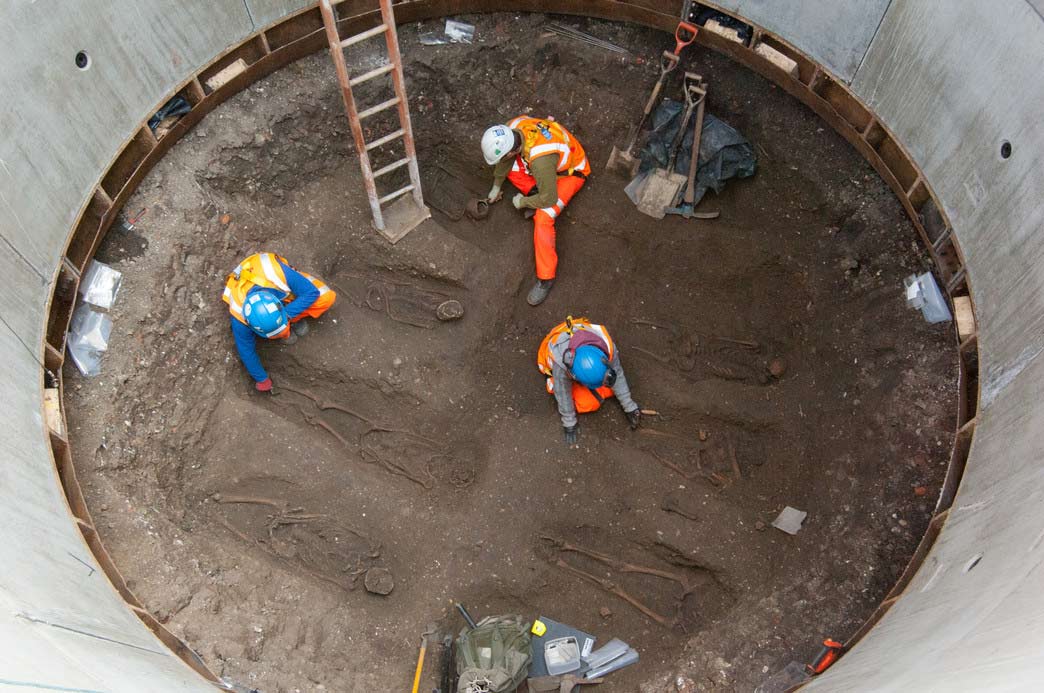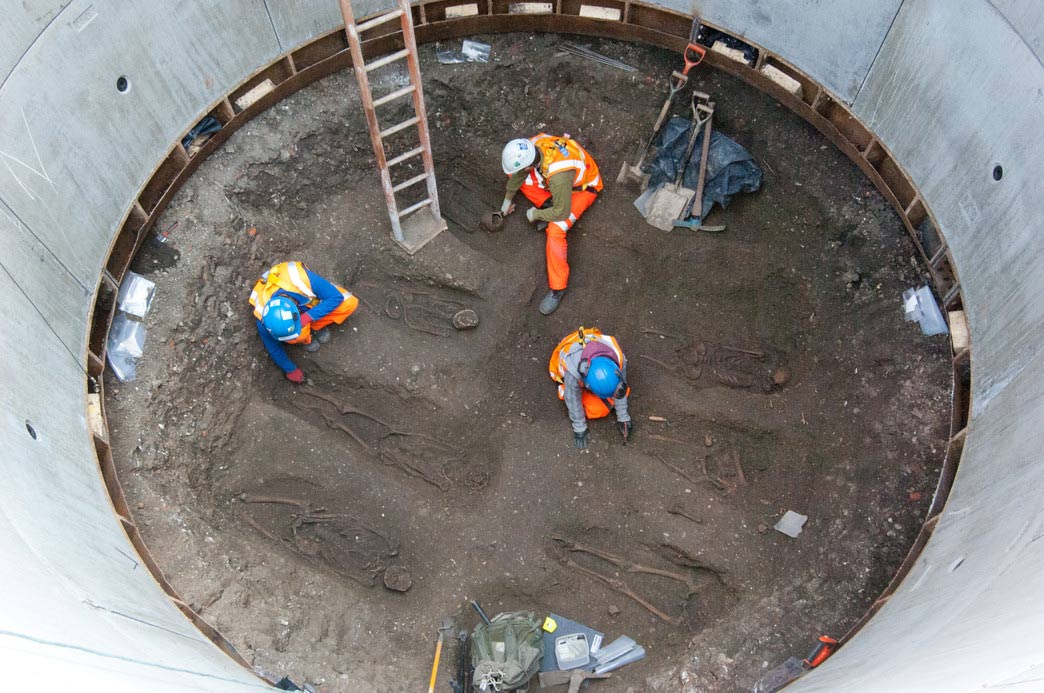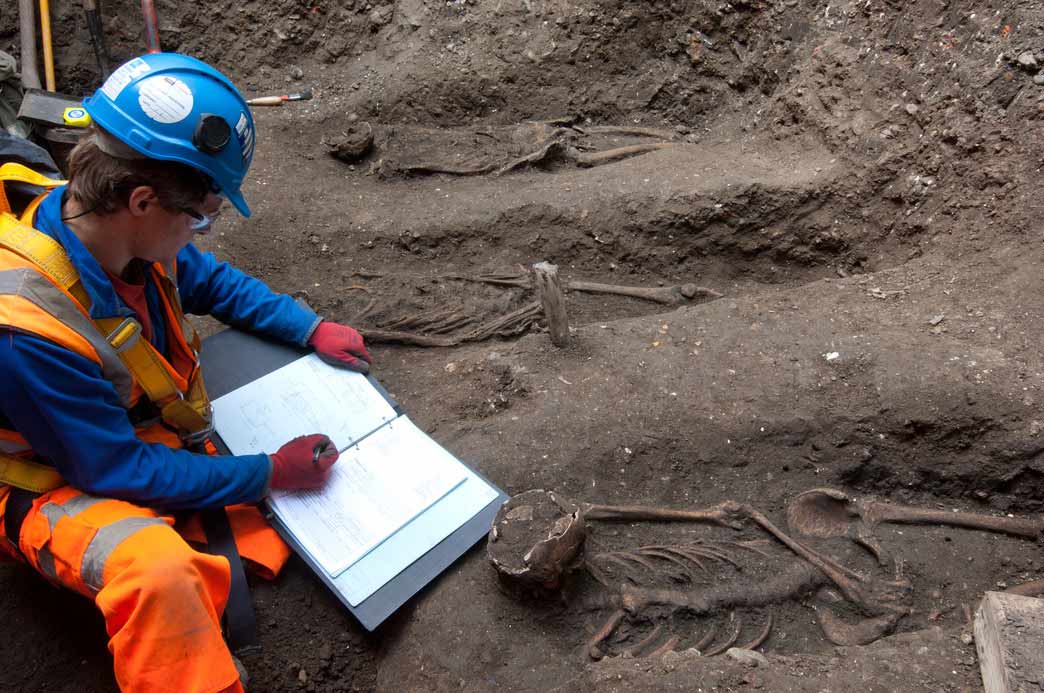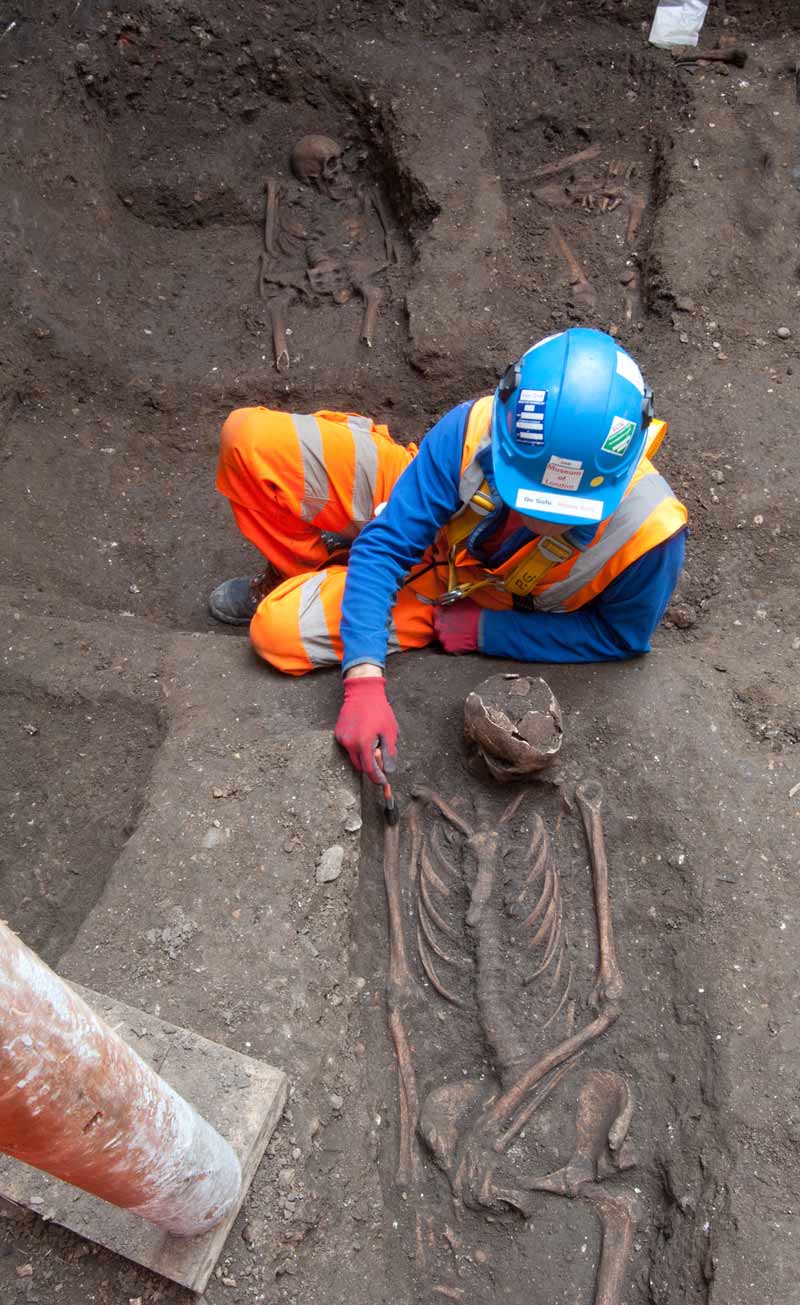In Photos: 14th-Century 'Black Death' Grave Discovered
In 2 rows

Archaeologists discovered skeletons lying in two carefully laid out rows on the edge of Charterhouse Square at Farringdon, in London. The skeletons may be up to 660 years old.
No man's land

The burial ground had been described as "no man's land" in historical records referencing a burial in the Farrington area that opened during the Black Death plague in 1348.
Exccavating bones

The 13 skeletons discovered are being carefully excavated and taken to the Museum of London Archaeology for lab tests, including possibly DNA tests for the plague bacteria and radiocarbon dating of the bones to establish burial dates.
Hastily established cemetery

Up to 50,000 people may have been buried in fewer than three years in this hastily established cemetery, according to a statement from the museum, with the burial ground used up until the 1500s.
Evidence stacks up

"At this early stage, the depth of burials, the pottery found with the skeletons and the way the skeletons have been set out, all point towards this being part of the 14th-century emergency burial ground," said lead Crossrail archaeologist Jay Carver in a statement, referring to the "no man's land" burial ground.
Under a road

The remains were found in an 18-foot-diameter (5.5 meters) shaft about 8 feet (2.5 m) below the road around Charterhouse Square gardens, near to the former Carthusian Monastery.
Digging deeper

In addition to the skeletal findings, archaeologists also hope to find Roman artifacts as they dig deeper.
Get the world’s most fascinating discoveries delivered straight to your inbox.
Examining bones

Another look at the skeletal remains likely from Black Death victims from the 14th century.
1348 Black Death

In addition to this recently unearthed 1348 Black Death burial ground (shown here), another one was discovered in the 1980s in east Smithfield, where more than 600 skeletons were removed for analyses.
 Live Science Plus
Live Science Plus






